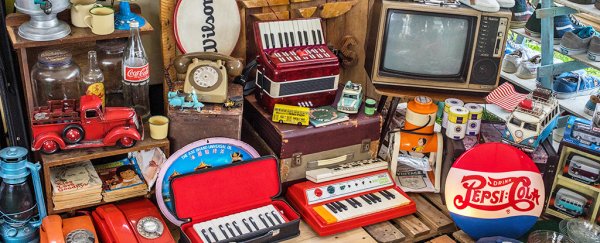If you're always hanging on to junk you no longer need, a new study suggests one way to start decluttering: take photos of the stuff you can't bring yourself to let go of.
Researchers found that people are more willing to part with unneeded items with sentimental value if they do something to preserve the memory first – like taking a snap of whatever it is.
There's some common sense behind the idea, but it's also backed up by the new findings, based on a charity donation drive aimed at 797 students at Penn State University.
The donation drive had two different advertising campaigns, separated by halls of residence: one encouraged students to take photos of their unneeded items then donate them, while the other just suggested collecting up items to donate.
A total of 613 items were given from the halls where the advertising suggested preserving the memories of the donated items first, compared with 533 from halls where the other campaign was used.
"What people really don't want to give up is the memories associated with the item," says one of the researchers, Rebecca Reczek from Ohio State University.
"We found that people are more willing to give up these possessions if we offer them a way to keep the memory and the identity associated with that memory."
The research was inspired by a pair of basketball shorts owned by one of the researchers – shorts that were a reminder of a major victory in junior high. After taking a photo of the shorts it was easier to let them go to someone else.
Five further experiments, involving a total of 783 participants, used online surveys to take a closer look at why we might be willing or unwilling to give away our old junk to people who might need it more.
The experiments asked for feedback on why people do or do not feel they can donate items, and what kind of difference taking photos might make.
What the researchers found was that our hoarded items are also bundled up with feelings of identity, so infant clothes might give a strong sense of identity to new mothers and fathers, for example.
What's more, it seems to be sentimentality rather than the inconvenience of donating or the condition of items that stops us from passing them on. For items that didn't have sentimental value, taking photos didn't change the likelihood of them being donated one way or the other.
As well as giving habitual hoarders a way of decluttering, the researchers hope the photo trick could also help charities and non-profits boost the number of donations coming in – although they suspect there might be a limit to its effectiveness.
Something really sentimentally significant, like a wedding dress, is hard to give away no matter how many photos you take of it, for instance.
There's also a difference between knowing that this can work and actually getting around to it, so if you've got some cleaning out to do, fire up your phone's camera and get to it.
"It is not terribly surprising that we can keep the same memories alive just by taking a photo of these possessions, but it is not a natural behaviour," says Reczek. "It is something we have to train ourselves to do."
The research has been published in the Journal of Marketing.
